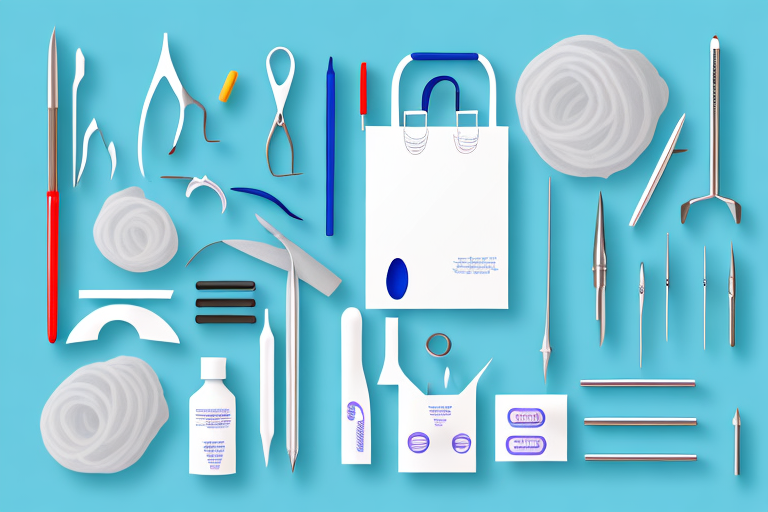If you’re interested in becoming a phlebotomist, you’ve chosen a career in the healthcare industry that involves drawing blood from patients. While phlebotomy may seem like a routine task, it is a crucial part of the healthcare system. Phlebotomists are responsible for collecting blood samples, which are sent to laboratories for testing. It is a job that requires great attention to detail, a gentle touch, and excellent communication skills with patients.
Steps to Becoming a Phlebotomist
- High School Diploma or Equivalent: Most phlebotomy programs require a high school diploma or GED as a prerequisite. High school courses in biology, chemistry, and mathematics can be useful preparation, but are not generally required.
- Complete a Phlebotomy Program: Many vocational schools, technical colleges, and community colleges offer phlebotomy certificate programs. These programs often take about a year to complete and involve both classroom instruction and practical training. Subjects often include human anatomy, medical terminology, and safe handling and disposal of biohazardous materials. They also cover the techniques for drawing blood, often referred to as “sticks”.
- Gain Practical Experience: Phlebotomy programs often include an externship, or clinical practice, where you can gain experience drawing blood in a real healthcare setting under the supervision of a medical professional. This practical experience is crucial for developing confidence and competence in phlebotomy procedures.
- Get Certified: Many employers prefer certified phlebotomists. There are several organizations that certify phlebotomists, such as the National Phlebotomy Association (NPA), American Society for Clinical Pathology (ASCP), and the American Medical Technologists (AMT). The requirements for certification often include completing an accredited phlebotomy program and passing a certification exam.
What does a Phlebotomist do?
A phlebotomist is an important member of the healthcare team who is responsible for drawing blood from patients for medical tests, donations, or transfusions. This is a critical procedure that helps doctors diagnose and treat a wide range of medical conditions.
Phlebotomists work in a variety of settings, including hospitals, clinics, blood banks, and laboratories. They are trained professionals who have a deep understanding of the human anatomy and physiology, as well as the principles of medical testing.
When a patient needs to have blood drawn, the phlebotomist is responsible for preparing the patient and the equipment. They must carefully explain the procedure to the patient and ensure that they are comfortable and relaxed. The phlebotomist then uses a variety of techniques to locate the patient’s veins, such as palpation, visualization, or the use of a vein finder.
Once the phlebotomist has located a suitable vein, they will clean the area with an antiseptic and insert a sterile needle into the vein. The blood is then collected into a tube or vial, which is labeled with the patient’s information and sent to the laboratory for testing.
Phlebotomists must be highly skilled and precise in their work to ensure that the blood samples are properly collected, labeled, and stored. They must also maintain cleanliness and hygiene standards to prevent any infections. In addition, they must have excellent communication skills to help patients feel at ease during the blood collection process.
Phlebotomy is a medical field that involves drawing blood from patients for medical testing, transfusions, or donations. Phlebotomists are trained professionals who perform this procedure and work in various healthcare settings such as hospitals, clinics, and blood donation centers.
How Much does a Phlebotomist Earn?
While the median annual salary in 2022 for phlebotomists in the United States is $38,530 (source: Bureau of Labor Statistics), there are several factors that can affect their pay scale. One of the most significant factors is the geographic location of their workplace. For instance, phlebotomists working in metropolitan areas may earn more than those in rural areas due to the higher cost of living.
Another factor that can influence the salary of a phlebotomist is their level of experience. Entry-level phlebotomists may earn a lower salary than those who have been working in the field for several years. Additionally, phlebotomists who have specialized skills such as pediatric phlebotomy or arterial blood gas collection may earn a higher salary due to the increased demand for their services.
It’s also worth noting that the type of employer can impact a phlebotomist’s salary. For example, phlebotomists who work in hospitals or diagnostic laboratories may earn a higher salary than those who work in blood donation centers or physician offices.
Despite the variability in pay scale, phlebotomy remains a rewarding career choice for many individuals. Being a phlebotomist allows you to directly impact patient care and contribute to the diagnosis and treatment of various medical conditions. Additionally, phlebotomy is a growing field with a positive job outlook, making it an attractive option for those interested in healthcare.
What are the Job Prospects for a Phlebotomist?
According to the Bureau of Labor Statistics, the employment rate for phlebotomists is projected to grow 17% from 2019 to 2029, much faster than the average for all occupations. With an aging population, there will always be a demand for healthcare services, and hence, for phlebotomists.
Where are the Best Places to Work as a Phlebotomist?
Phlebotomists may find work in a variety of settings, including hospitals, clinics, diagnostic laboratories, blood banks, research institutes, and nursing homes. Different settings may offer different work environments and salaries. Hospitals and diagnostic laboratories are the top employers of phlebotomists.
In conclusion, becoming a phlebotomist takes some time and dedication, but it is an immensely rewarding career for those interested in the healthcare industry. You may find yourself working in a fast-paced environment, dealing with different patients daily, and contributing to the diagnosis and treatment of illnesses. With some education, training, and certification, you can become a part of this essential healthcare profession and have a thriving career.

